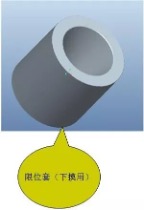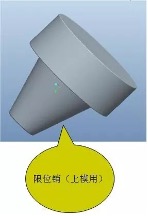RTM·Resin Transfer Molding Process
Due to the comprehensive requirements of quality, strength, cost, environmental protection, cleanliness, etc., my country’s hand lay-up FRP forming process has begun to transition from open hand lay-up process to closed mold forming process. In recent years, this process has been applied by some companies in related fields such as automotive parts, wind power products, ships and yachts, and has partially or completely replaced the traditional hand lay-up process.
Tooling And Fixture Design Of Mold
In RTM molds, the limit pin is a tool to control the thickness of the product and the fit between the upper and lower molds. At present, it is roughly divided into two types: conical and spherical according to the size of the mold and the scope of application
Conical Stop Pin

Ball Stop Pin



There are usually two ways of fastening:
- Buckle fastening
- Bolt fastening
Buckle Fastening

Bolt Fastening

Mold Closing Type

Hinged Snap-on Mold Closing

Hinged Buckle Mold Closing

Position Of Injection Port And Exhaust Port
- Center injection
- Peripheral injection
Peripheral casting can reduce the filling time by more than 60% compared with center casting, and the porosity can be reduced by more than 25%, while also improving certain mechanical properties.
In addition, there are vacuum assistance and filling time control.
Mold Sealing
Sealing is a key step in the entire mold making process. According to the size and structure of the product, it can be roughly divided into the following 7 methods: rectangular sealing, semicircular sealing, mushroom-shaped sealing, semicircular + V-shaped two-way sealing, circular vacuum sealing, circular inflation sealing, semicircular two-way sealing.
Rectangular Sealing

Circular Vacuum Seal

Circular Vacuum Seal

Semicircular + V-shaped Two-way Seal

Introduction to RTM Process
RTM is a composite material production process that first places the reinforced fabric in a mold to form a certain shape, then injects the resin into the mold, impregnates the fiber and solidifies it. It is one of the main molding processes of FRP. Its biggest feature is low pollution and a closed mold operating system. In addition, it is superior to SMC and BMC in terms of product designability, directional enhancement and comprehensive product performance.

RTM-Mold Preparation
- Check whether the mold has any defects and use compressed air to clean the impurities on the mold surface. Check whether the design of the injection port and exhaust port is reasonable.

2. Unclogging The Feed Inlet And Exhaust Port Is The Key




Upper Mold

Lower Mold

Lower Mold
RTM-gel Coat Preparation
Add appropriate amount of curing agent according to the temperature of the day and stir evenly

Apply the gel coat evenly to the inner surface of the mold without any light transmission, sagging or accumulation.

RTM-Laying
Lay the corresponding mat and cloth on the mold surface according to the product manufacturing process
Trim Off Excess Scraps


RTM-Mold Closing

Close the laminated lower mold and upper mold and seal and tighten the periphery


RTM-Injection
Low injection pressure facilitates resin flow, high injection pressure facilitates gas discharge.
Injection temperature and resin viscosity
Low injection temperature and low resin viscosity facilitate resin flow.
Low injection pressure and high injection temperature can be used


RTM-Curing

Curing process: gel stage, setting stage (hardening stage), maturation stage (complete curing stage)
Curing control: Control the degree of curing by adjusting the curing agent content and curing temperature in the resin glue
RTM-Demolding


Separate The Upper And Lower Molds

Separate The Product From The Mold
RTM-inspection
Check whether the product has defects and whether the mold is damaged

Products Displacys






ANY QUESTIONS OR COMMENTS, PLEASE GET A HOLD OF US IN WHICHEVER WAY IS MOST CONVENIENT. WE WILL REPLY YOU WITHIN 24 HOURS.



